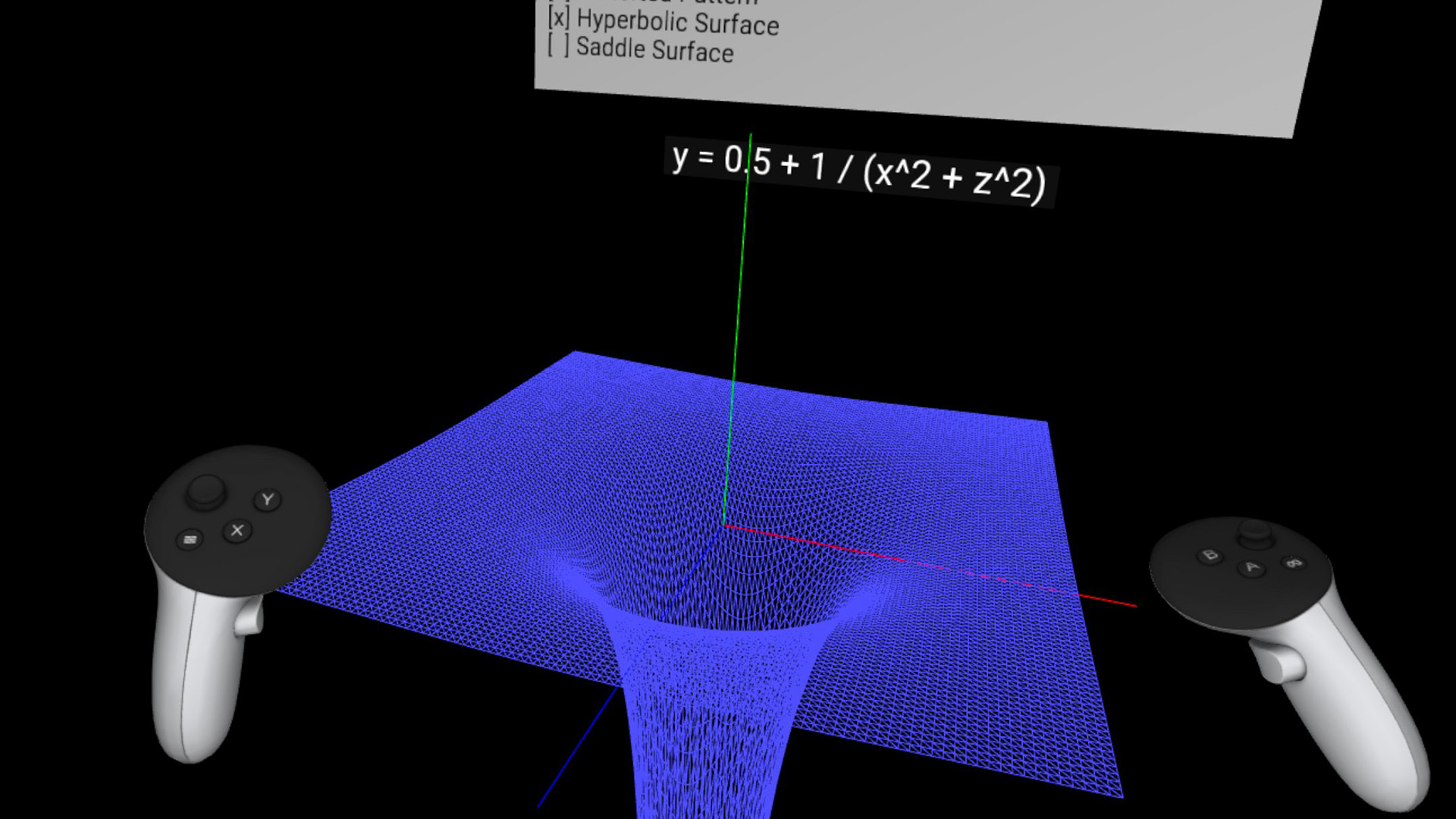Graphs
Description
The Quest Graph Visualizer is a sophisticated VR application designed to render interactive 3D graphs, offering a dynamic and immersive way to explore mathematical functions and partial derivatives. This app is particularly useful for users interested in visualizing complex mathematical landscapes.

The app presents a menu from which users can select predefined 3D functions, ranging from simple sinusoidal wave functions to more complex shapes like a torus or a hyperbolic surface. Users can select a function using the controllers. Once a menu entry is selected, the mesh of the 3D function is calculated and visualized in front of the user. Users can change the visualization mode, for example, switching from a solid surface to a wireframe mode, or toggling normals on and off (by clicking the controller buttons). Additionally, after setting the controllers aside, users can visualize a Gradient Descent path at arbitrary locations using simple hand interactions: the left hand points with the index finger to select the intersection point on the surface, while the right hand projects the fingertips onto the function's surface.
Adding a new 3D function for visualization is straightforward — simply provide the function pointer to the new function to be visualized. The app utilizes Ocean's AutomaticDifferentiation functionality to automatically calculate the function values and their partial derivatives.
Furthermore, a custom scale and visualization boundary can be defined for each graph to ensure that only a specific part of the function is visualized. This demo serves as an excellent introduction to Ocean's mathematical capabilities and demonstrates how to customize and adjust 3D meshes for rendering.
Building
- Quest
The following instructions are for macOS but can be easily converted to other host operating systems. First, ensure that the
have been completed. And that the third-party libraries have been built according to these instructions.
Then run the following steps:
# Define environment variables required for Android and Quest apps as per setup instructions above:
# ANDROID_HOME, ANDROID_NDK, ANDROID_NDK_VERSION, JAVA_HOME, and OVRPlatformSDK_ROOT
# Adjust this to your location of the third-party libraries
export OCEAN_THIRDPARTY_PATH="${HOME}/install_ocean_thirdparty"
cd ${OCEAN_DEVELOPMENT_PATH}/build/gradle/application/ocean/demo/platform/meta/quest/openxr/graphs/quest
./gradlew assemble
# Install debug build of the app
adb install app/build/outputs/apk/debug/app-debug.apk
# Install release build of the app
adb install app/build/outputs/apk/release/app-release.apk
Features
- 3D Graph Rendering: Displays mathematical functions in 3D.
- Visualization Options: Switch between solid, wireframe, and normals views.
- Hand-Gesture Interaction: Explore Gradient Descent paths with hand movements.
- Automatic Differentiation: Computes values and derivatives automatically.
Educational and Immersive
- Hands-On Learning: Direct interaction with mathematical concepts.
- Visualizing Complex Concepts: Makes abstract math tangible and visual.